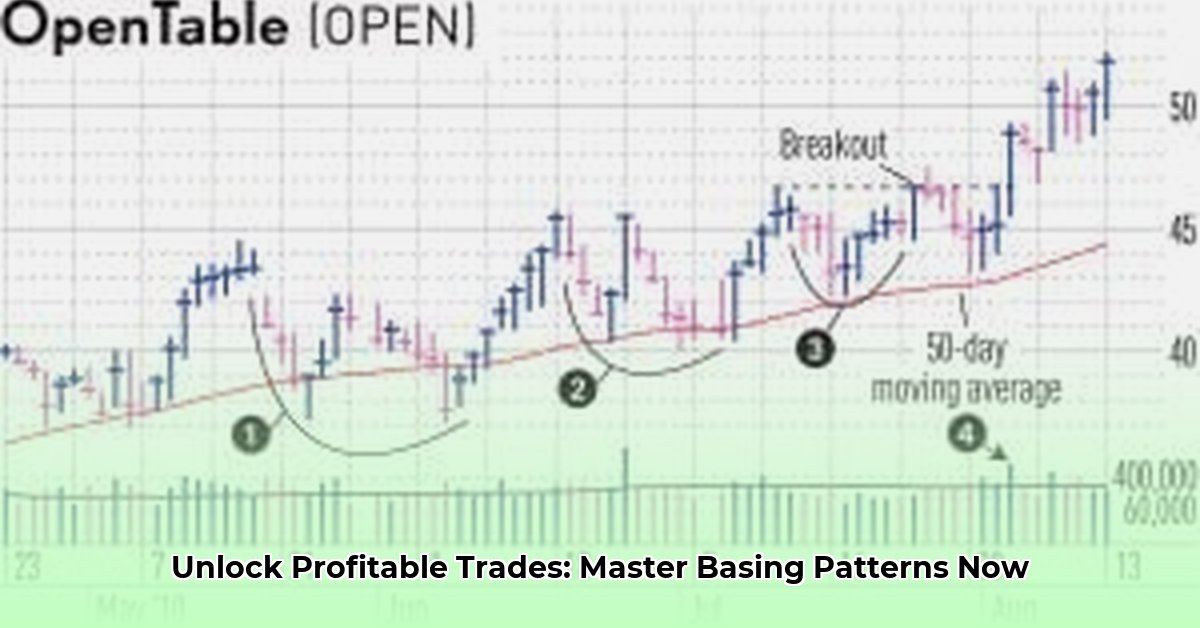
Let's explore basing patterns—periods of price consolidation preceding significant market movements. Understanding these patterns can significantly enhance your trading strategy. We'll examine two prevalent types: the "cup with handle" and the "flat base," detailing identification techniques and risk mitigation strategies.
Understanding Basing Patterns: The Market's Pause
Imagine a runner briefly resting before a final sprint. Basing patterns are analogous: after a price drop, the market may consolidate within a range before a potential upswing. This pause offers traders potential entry points. However, not all consolidations herald upward surges.
Identifying Basing Patterns: A Step-by-Step Guide
Identifying basing patterns requires practice and attention to detail. Follow these steps:
Step 1: Downtrend Recognition: Initially, identify a clear downtrend. This establishes the pattern's foundation. Look for consistent price declines.
Step 2: Consolidation Zone Definition: After the downtrend, observe a period of reduced price volatility. Prices fluctuate within a defined range, signifying the potential "base."
Step 3: Volume Analysis: Volume is crucial. Lower volume during the base suggests accumulation by buyers, quietly building positions. Increased volume at the breakout confirms the rally's legitimacy.
Step 4: Moving Averages as Confirmation: Utilize moving averages (e.g., 20-day or 50-day) to confirm the pattern. A breakout above these averages often indicates bullish momentum.
Step 5: Risk Management: Employ stop-loss orders to limit potential losses—a crucial aspect of responsible trading. Sticking to your pre-defined risk management plan minimizes emotional decisions.
Decoding the "Cup with Handle" Pattern
This classic pattern features a U-shaped "cup" representing the trough in price, followed by a slight downward "handle" preceding the breakout. The handle provides a potential entry point. Its distinctive shape makes it relatively easy to identify.
Understanding the "Flat Base" Pattern
The "flat base" pattern is simpler, showing horizontal price movement within a range. While easier to identify than the cup and handle, its potential reward might be lower. Always assess the risk/reward ratio before entering any trade.
Validating Your Findings: A Checklist
Before trading, validate your findings using this checklist:
- Volume: Does volume support the pattern? Increased volume at the breakout is a strong indicator.
- Moving Averages: Confirm the trend using moving averages. A clean break above major moving averages strengthens the bullish signal.
- Broader Market Context: Consider overall market conditions and prevailing sentiment.
- Fundamental Analysis: Evaluate any relevant economic events or company news that could impact price.
Here's a comparison:
| Criteria | Cup with Handle | Flat Base |
|---|---|---|
| Base Formation | U-shaped | Horizontal |
| Volume during Base | Usually low | Typically low |
| Breakout Volume | High | Moderate to High |
| *Moving Average Confirmation | Breakout above averages | Breakout above averages |
| Time Frame | Weeks to Months | Weeks to Months |
Real-World Examples: Learning from Success and Failure
Analyzing real-world examples – both successful and unsuccessful trades involving basing patterns – is essential. This allows you to learn from both positive and negative outcomes, enhancing your pattern recognition skills and risk management.
Managing Risk: The Prudent Trader's Approach
Every trading strategy involves risks. Let's examine potential pitfalls and mitigation strategies.
| Basing Pattern | Risk of False Signal | Risk of Missed Opportunity | Reward Potential | Mitigation Strategies |
|---|---|---|---|---|
| Cup with Handle | Moderate | High | High | Tight stop-losses, volume confirmation, moving average confirmation |
| Flat Base | Low | Medium | Medium | Diversification, position sizing, thorough market analysis |
Conclusion: Enhancing Your Trading Skills
Mastering basing patterns is an ongoing process of learning, practice, and disciplined risk management. While these patterns offer valuable insights, success isn't guaranteed. Thorough research and a robust trading plan are crucial for long-term success. Remember, consistent learning and adapting to market conditions are key to becoming a successful trader.